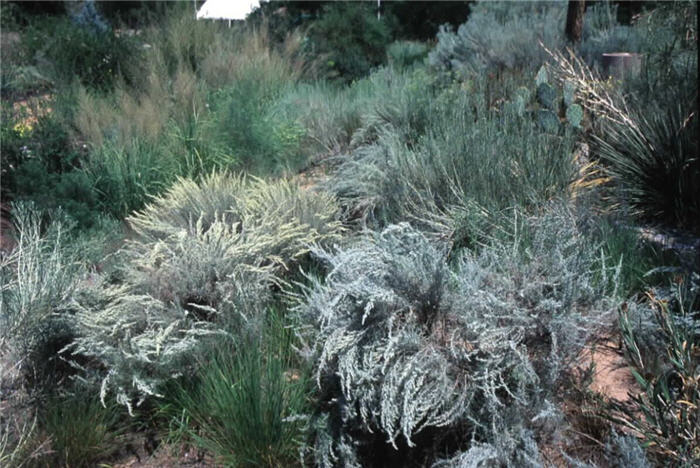| Botanical Name: Artemisia filifolia | |
| Common Name: Sand Sagebrush |

-
Anatomy
-
Culture
-
Design
Plant Type
Broadleaf Evergreen, Shrub
Height Range
3-6'
Flower Color
Yellow
Flower Season
Summer, Fall
Leaf Color
Blue Green, Grey Green, Silver
Bark Color
Brown, White
Fruit Color
n/a
Fruit Season
n/a
Sun
Full
Water
Very Low, Low
Growth Rate
Moderate
Soil Type
Sandy, Clay, Rocky
Soil Condition
Average, Poor, Well-drained, Dry
Soil pH
Neutral, Basic
Adverse Factors
Allergenic
Design Styles
Meadow, Mediterranean, Ranch, Spanish
Accenting Features
Fragrance, Unusual Foliage
Seasonal Interest
Winter
Location Uses
Background, Shrub Border, Foundation, Raised Planter, Walls / Fences
Special Uses
Cut Flowers, Erosion Control, Naturalizing
Attracts Wildlife
n/a
Information by: Stephanie Duer
Photographer: Mountain States Nursery
Photographer: Mountain States Nursery
-
Description
-
Notes
Sand sage provides softness and movement in the landscape. A semi-evergreen shrub with feathery, silver-blue, fragrant foliage, covered with white hairs giving it a silvery cast. New wood is whitish; more mature wood is a brown and shaggy. Inconspicuous flowers appear in late summer. Grows 3 to 4 feet tall and wide. Ideal for a meadow or naturally-styled landscape.
Grow in full sun and well drained soil, preferrably a little on the coarse side. Tolerates gravelly-clay and sandy soils. Alkaline tolerant. Doesn't require watering once it is established. Good for erosion control. May self-sow in preferred conditions. Though pruning is not required, cutting it back every couple of years will encouage a tidier habit.